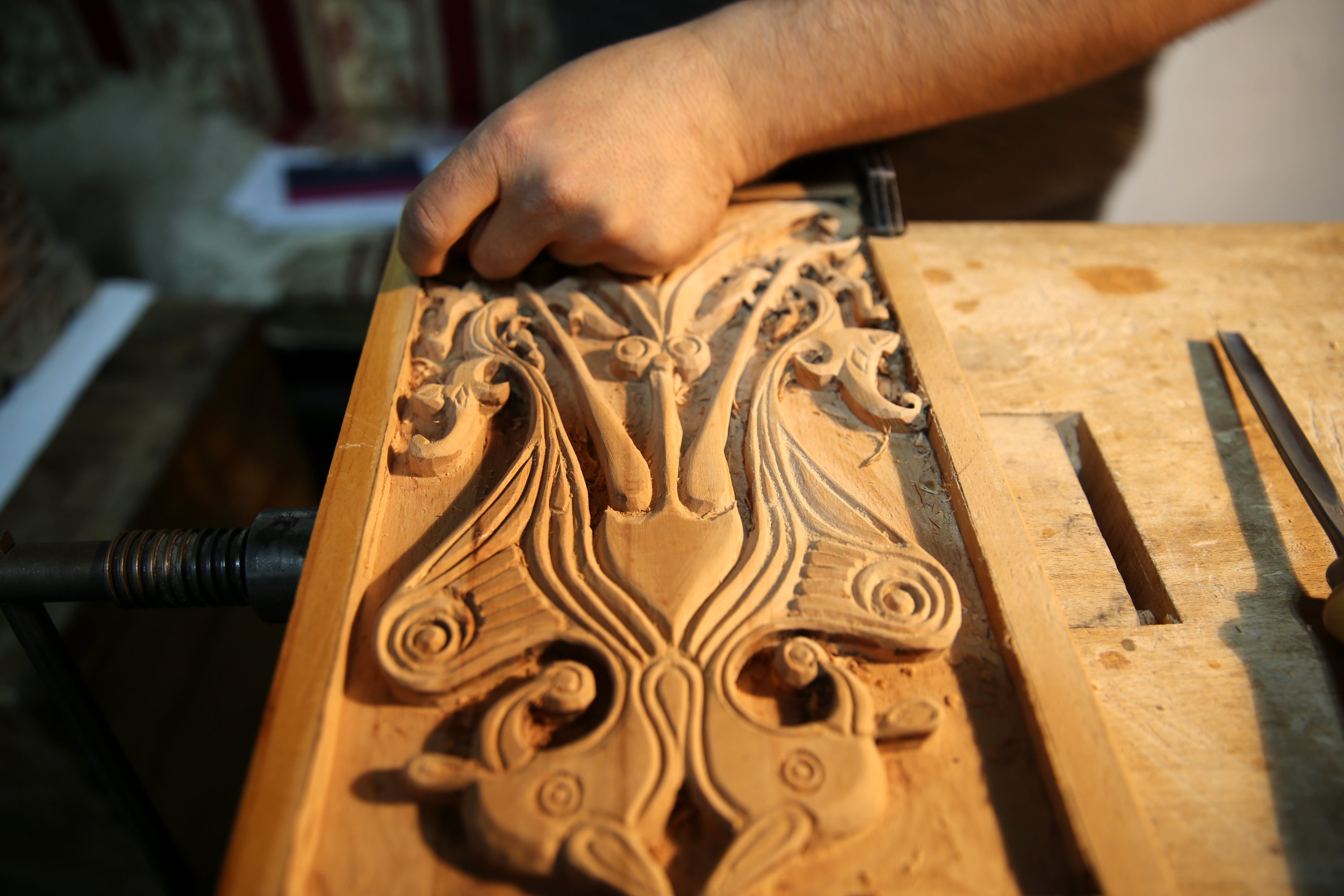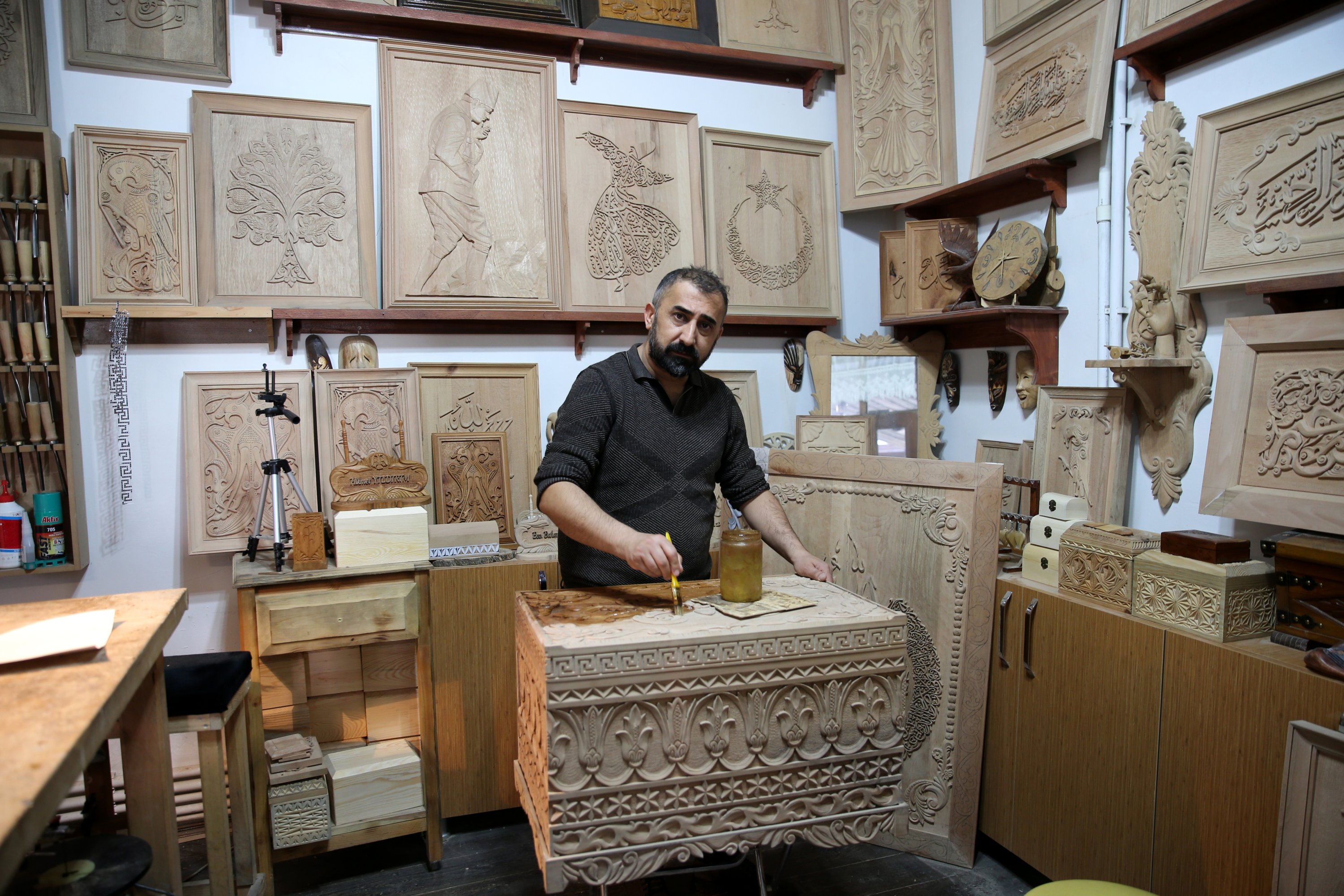© Turkuvaz Haberleşme ve Yayıncılık 2025
Süleyman Daştan, who lives in the central province of Sivas, has been creating beautiful wooden products inspired by Seljuk and Ottoman works for the last 20 years.
His works include minbars (a pulpit in a mosque where the imam delivers sermons), mihrabs (a niche in the wall of a mosque indicating the direction of Mecca) and doors for mosques and various wooden products for homes and workplaces. His creations are made without the use of nails.
The 42-year-old wood carving master patiently carves various patterns and motifs into wood millimeter by millimeter with chisels in his small furniture workshop at the Ihramcızade Cultural and Arts Center.
Daştan, who has been intertwined with wood since childhood and graduated from Cumhuriyet University Sivas Vocational School Department of Design, creates original works thanks to the education he received on motifs, patterns, design and composition.
The craftsperson told Anadolu Agency (AA) that he is trying to keep the art of wood carving, which he has been performing for nearly 20 years, alive by transferring the skill to future generations.
Daştan stated that his inclination for the craft dates back to his childhood because his father was involved in the wood business. "My predisposition to the smell and texture of wood dates back to childhood. I started to practice wood art professionally after I graduated from school. Since then I have continued in this craft." he said.
Daştan stated that he received training in handicrafts design. "Actually, I didn't study wood, in particular, but I received training in drawing and design, which is in the background, in the kitchen, of wood. That's what made me good at wood. Otherwise, there are many people who carve wood. My education was about the patterns I would apply to wood, how it was designed, how it was made, how it was drawn. That's why I was successful in wood." he explained.
Stating that industrial machines are used extensively in all areas of life and that he uses traditional methods, Daştan outlined: "Traditionally, I carry out this work using chisels. I completed a chest in six months. If it were made with a machine it would be possible to produce a few in one day, I could only complete one in six months carving by hand. It's like digging a well with a needle. What makes my work meaningful and beautiful is that it is done by hand. For me, wood is a passion, that is, I have never had a moment where I regretted working with this art form or question why am I doing this job. On the contrary, I get more motivated as the work gets harder. I always want things that challenge me. In other words, doing what could not be done, succeeding in what could not have been achieved makes me happier and provides motivation."
Stating that the works he is most proud of are the mihrabs, minbars and door decorations he has made for mosques, Daştan said, "These works make me happier and it gives me more pleasure to look at, see and touch them even though years have passed."

Daştan generally uses Ottoman and Seljuk motifs in his works. "Since the region we live in, the geography we live in is a Seljuk city, I predominantly use Seljuk and Ottoman motifs. I use Turkish motifs extensively. I like the motifs that the Seljuks used on decorations, stones and tombstones," he added.
Emphasizing that the biggest problem of the profession is not being able to find an apprentice, Daştan continued: "I organize courses and hundreds of people enroll. While the majority of those who come to the course are professionals, unfortunately, those who are jobless are not interested in art. It is upsetting to see this art in a situation where it could be forgotten and not passed on to future generations. Everyone who comes to the course already has a gold bracelet on their arm and comes to pursue it as a hobby. I wish that young people who struggle to learn this craft and earn their livelihoods from this craft and want to pass it on to future generations would prefer these places. In that sense, there is a problem, there are many trainees and no apprentices."

Daştan added that his biggest dream is to transfer to wood a 50%-70% reduced version of the decoration on the west door of Divriği Great Mosque, which is on the UNESCO "World Cultural Heritage List."
